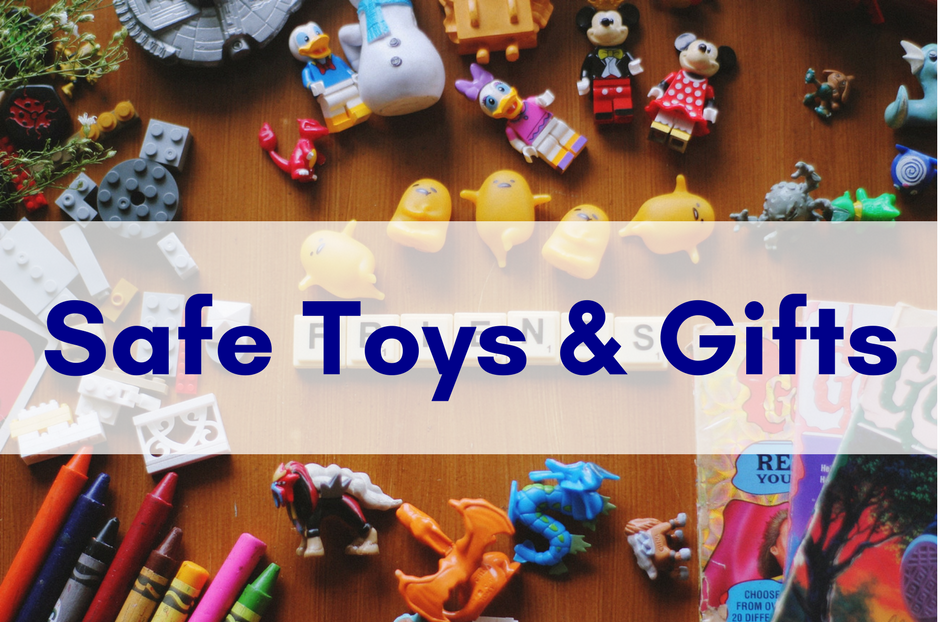 December is National Safe Toys & Gifts Month!
December is National Safe Toys & Gifts Month!
When it comes to toys and gifts, the excitement of getting children their favorite toys may cause shoppers to forget that not every toy is safe for every child. The consequences of this can be serious; more than 250,000 children in the United States were sent to the emergency room last year because of toy-related injuries.
The good news is that prevention is as simple as following a few safety guidelines!
Tips on buying safe toys:
- Age Recommendations: Keep to the age recommendations listed on the toys you buy, and teach older kids to keep their toys away from young children.
- Balloons: Never let children plan with deflated or broken balloons, which can accidentally be inhaled and cause choking. Discard broken balloons immediately.
- Sharp Edges: Avoid toys that have sharp edges and points.
- Toy Guns: If you buy a toy gun, be sure the barrel, or the entire gun, is brightly colored so that it’s not mistaken for a real gun. Do not let children keep caps for toy guns in their pockets, as this is a burn hazard.
- Riding Toys (e.g. bicycles, scooters, skateboards, hoverboards, roller-skates, etc.): If you buy a riding toy, buy appropriate safety gear as well. Helmets should be sized to fit and worn properly whenever the riding toy is used. Falls from these toys can be deadly.
- Art Materials: Look for household art materials, including crayons and paint sets, marked with the designation “ASTM D-4236.” This means the product has been reviewed for chronic health hazards and, if necessary, the product has been labeled with cautionary information.
- Magnets: Keep high-powered magnet sets away from children.
- Children under 3-years-old:
- Remember, children under three tend to put everything in their mouths! Avoid buying toys that have small parts (which are a choking hazard) and be aware that very furry, plush toys have the potential to cause suffocation.
- Avoid marbles and games that have parts with a diameter of less than 1.75 inches. A toy that can pass through a toilet paper roll is too small for young children. These products pose a choking hazard.
- Children under three are particularly likely to pull, prod, and twist toys. Look for well-made toys, with tightly secured parts.
- Avoid toys that are constructed with thin, brittle plastic that might easily break into small pieces or leave jagged edges.
Tips for after toys have been opened:
- Immediately discard plastic wrapping or other toy packaging.
- Teach older kids to keep their toys away from young children.
- Check toys periodically for breakage and potential hazards. Damaged or dangerous toys should be repaired or thrown away.
- Supervise battery charging. Chargers and adapters can pose thermal burn hazards to young children. Pay attention to instructions and warnings on battery chargers. Some chargers lack any mechanism to prevent overcharging.
- Keep high-powered magnet sets away from children.
Safe Toy Checklist (by Prevent Blindness America)
Toy Safety Alerts (from the U.S. Consumer Product Safety Commission (CPSC)
- Balloons
- Button Battery Safety | (Quiz)
- Caps for Toy Guns
- Electric Toys
- Hoverboards
- Magnets
- Plastic Film on Toys and Other Children’s Products
- Strings and Straps on Toys
- Toy Chest Lids
- Child Safety Protection Act Fact Sheet
For more information about purchasing safe toys and gifts, call the U.S. Consumer Product Safety Commission toll-free hotline: 1-800-638-2772.
